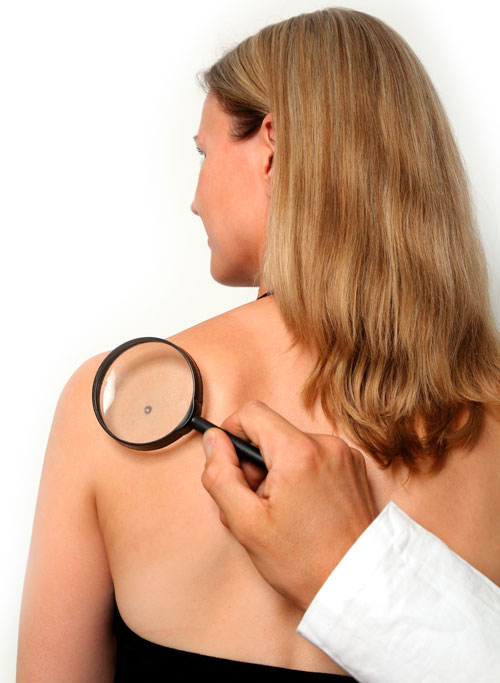Moles, also known as nevi, are common skin growths that appear as dark spots on the skin. They are formed from a type of skin cell called melanocytes. These cells produce melanin, which is the pigment responsible for our skin, hair, and eye color.
When these cells cluster together, they create a mole. We can acquire moles from early childhood and adolescence, and they continue to develop into adulthood. These little brown spots can be attributed to genetics, sun exposure, hormonal changes, age, skin friction, and many other unknown factors.
Vian Alrubaie, physician’s assistant at La Peau Dermatology in Mesa, helps explain the differences between common, and dangerous, moles.

“There are three common types of non-dangerous moles. Compound melanocytic nevi, dermal melanocytic nevi, and junctional melanocytic nevi. These are fancy names for those raised or flat, light brown, and sometimes hairy brown spots sprinkled over our bodies. Luckily, most of the time these moles remain nondangerous, or benign, and require no treatment,” she said.
“Other types of moles, identified as atypical, or dysplastic nevi, are the unusual looking moles with irregular features. Those features can be examined thoroughly under a microscope and are worth your attention because they are a type of mole that has an increased risk for a dangerous skin cancer called melanoma,” said Vian.
WHAT CAUSES MELANOMA?
Melanoma affects the melanocytes, or the melaninproducing skin cells responsible for the color of your skin. DNA changes in these cells cause the cells to divide and multiply at an abnormally fast rate. The most common reason for these changes is exposure to UV radiation, including the UVA and UVB rays from sunlight and tanning lamps. Genetic factors can also play a role.
WHAT ARE THE WARNING SIGNS?
The five warning signs of dangerous changes in moles, also known as the ABCs of melanoma growth conditions, include:
A. Asymmetrical appearance, where one side of the mole looks different from the other.
B. Boarders that are uneven in appearance.
C. Variation of colors within a single mole.
D. The diameter of a mole being greater than the size of a pencil eraser.
E. Evolution of changing shape, size, or color over time.
A skin cancer diagnosis always requires a biopsy, as visual examinations cannot always determine this rare type of skin cancer, which can occur with dangerous moles.
However, regular examinations provide the opportunity for the most appropriate treatments to prevent spreading to other parts of the body. If a patient develops melanoma, a dermatologist recommends a wide local excision of the mole to ensure complete removal of the dangerous lesion.
Although melanoma is the rarest type of skin cancer, it is responsible for almost all skin cancer related deaths.
La Peau Dermatology is currently accepting new patients, booking out anywhere from two to four weeks.
Vian Alrubaie has been a physician’s assistant at La Peau Dermatology for the past seven years. She enjoys forming professional relationships with patients and encourages routine examinations, beginning at age 20, to maintain healthy and safe skin. This recommendation holds particularly true for those of us who live in the sunny Arizona environment.
“Patients love coming into our office not only for routine skin checks but necessary surgeries and elective cosmetic procedures. We are extremely fortunate that we have many patients that have been referred to us from others that have had pleasant experiences in our office,” she said.
La Peau Dermatology is located at 5424 E. Southern Ave., Suite 103, in Mesa. Visit them online at lapeaudermatology.com or call (480) 401-5966.


